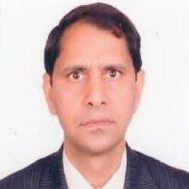International Journal of Computer Network and Information Security (IJCNIS)
IJCNIS Vol. 5, No. 4, 8 Apr. 2013
Cover page and Table of Contents: PDF (size: 1006KB)
3-Level Heterogeneity Model for Wireless Sensor Networks
Full Text (PDF, 1006KB), PP.40-47
Views: 0 Downloads: 0
Author(s)
Index Terms
Wireless sensor networks, heterogeneity, targets, energy efficiency, network lifetime
Abstract
In this paper, we propose a network model with energy heterogeneity. This model is general enough in the sense that it can describe 1-level, 2-level, and 3-level heterogeneity. The proposed model is characterized by a parameter whose lower and upper bounds are determined. For 1-level heterogeneity, the value of parameter is zero and, for 2-level heterogeneity, its value is (√5-1)/2. For 3-level of heterogeneity, the value of parameter varies between its lower bound and upper bound. The lower bound is determined from the energy levels of different node types, whereas the upper bound is given by (√5-1)/2. As value of parameter decreases from upper bound towards the lower bound, the network lifetime increases. Furthermore, as the level of heterogeneity increases, the network lifetime increases.
Cite This Paper
Satish Chand, Samayveer Singh, Bijendra Kumar, "3-Level Heterogeneity Model for Wireless Sensor Networks", International Journal of Computer Network and Information Security(IJCNIS), vol.5, no.4, pp.40-47, 2013. DOI:10.5815/ijcnis.2013.04.06
Reference
[1]N. Xu, "A Survey of Sensor Network Applications," IEEE Communications Magazine , Vol. 40, 2002. available: http://enl.usc.edu/~ningxu/papers/survey.pdf.
[2]Th. Arampatzis, J. Lygeros, and S. Manesis, "A Survey of Applications of Wireless Sensors and Wireless Sensor Networks," Proc. of 13th Mediterranean Conf. on Control and Automation, Limassol, Cyprus, June 27-29, 2005, pp. 719-724.
[3]I.F. Akyildiz, W. Su, Y. Sankarasubramaniam, and E. Cayirci, "Wireless sensor networks: a survey," Computer Networks, vol. 38, pp. 393–422, 2002.
[4]I. F. Akyildiz, W. Su, Y. Sankarasubramaniam and E. Cayirci, "A Survey on Sensor Networks", IEEE Communications Magazine, pp 102-114, Aug. 2002.
[5]M. Cardei, J. Wu, and M. Lu, "Improving network lifetime using sensors with adjustable sensing ranges", International Jour. of Sensor Networks, (IJSNET), Vol. 1, No. 1/2, 2006.
[6]P. Berman, G. Calinescu, C. Shah, and A. Zelikovsky, "Efficient energy management in sensor networks," In Ad Hoc and Sensor Networks, Wireless Networks and Mobile Computing, 2005.
[7]P. Berman, G. Calinescu, C. Shah and A. Zelikovsky, "Power Efficient Monitoring Management in Sensor Networks," IEEE Wireless Communication and Networking Conference (WCNC'04), pp. 2329-2334, Atlanta, March 2004.
[8]D. Brinza, and A. Zelikovsky, "DEEPS: Deterministic Energy-Efficient Protocol for Sensor networks", Proc. of ACIS International Workshop on Self-Assembling Wireless Networks (SAWN'06), pp. 261-266, 2006.
[9]S.K. Prasad and A. Dhawan. "Distributed Algorithms for lifetime of Wireless Sensor Networks Based on Dependencies Among Cover Sets," Proc. of 14th International Conf. on High Performance Computing,Springer, pp. 381-392, 2007.
[10]A. Dhawan, "Maximizing the Lifetime of Wireless Sensor Networks," Physical Sciences, Engineering and Technology, Wireless Sensor Networks / Book 1, ISBN 979-953-307-825-9, 2012.
[11]A. Dhawan, A. Aung and S.K. Prasad, "Distributed Scheduling of a Network of Adjustable Range Sensors for Coverage Problems," Proc. of International Conf. on Information Systems, Technology and Management (ICISTM'2010), Vol. 54, pp. 123-132, 2010.
[12]W.R. Heinzelman, A.P. Chandrakasan, and H. Balakrishnan, "Energy-Efficient communication Protocol for Wireless Microsensor Networks," 2000.
[13]W. Heinzelman, A. Chandrakasan and H. Balakrishnan. "An Application-Specific Protocol Architecture for Wireless Microsensor Networks," IEEE Transactions on Wireless Communications, Vol. 1(4), pp. 660-670, Oct. 2002.
[14]G. Smaragdakis, I. Matta, and A. Bestavros, "SEP: A stable election protocol for clustered heterogeneous wireless sensor networks," Proc. of 2nd International Workshop on Sensor and Actor Network Protocols and Applications, 2004.
[15]Q. Li, Z. Qingxin, and W. Mingwen, "Design of a distributed energy efficient clustering algorithm for heterogeneous wireless sensor networks", Computer Communications, vol. 29, pp. 2230-7, 2006.
[16]D. Kumar, T.S. Aseri, R.B. Patel "EEHC: Energy efficient heterogeneous clustered scheme for wireless sensor networks", International Jour. of Computer Communications, Elsevier, 2008, vol. 32(4), pp. 662-667, March 2009.
[17]O. Younis and S. Fahmy, "Distributed Clustering in Ad-hoc Sensor Networks: A Hybrid, Energy-Efficient Approach", Proc. of IEEE INFOCOM, March 2004.
[18]Y. Mao, Z. Liu, L. Zhang and X. Li, "An Effect ive Data Gathering Scheme in Heterogeneous Energy Wireless Sensor Networks," International Conf. on Computational Science and Engineering, CSE, Vol. 1, pp. 338-343, 2009.
[19]D. Kumar, T.S. Aseri, and R.B Patel "EECHE: Energy-efficient cluster head election protocol for heterogeneous Wireless Sensor Networks," Proc. of ACM International Conf. on Computing, Communication and Control-09 (ICAC3'09), Mumbai, India, 23-24 Jan. 2009, pp. 75-80.


